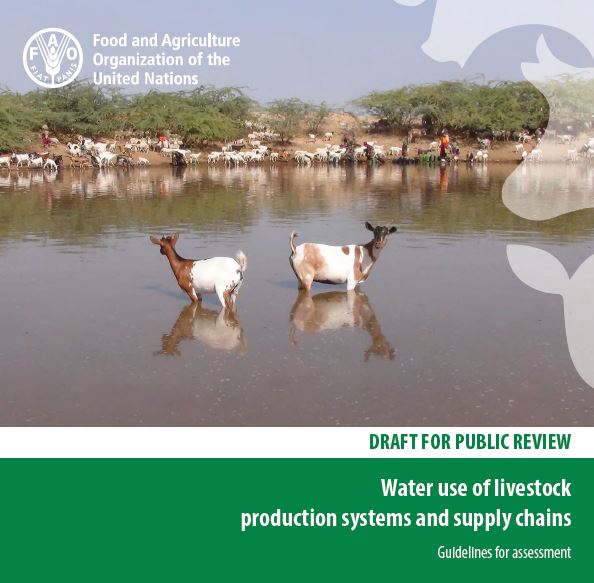Water use of livestock production systems and supply chains
There is raising recognition of the increasing competition between users, sectors and use, hence understanding the distribution and demands for freshwater in livestock production is of great importance (Busscher, 2012; Ridoutt et al., 2014; Hoekstra et al., 2012). Water usage for livestock sector should be considered an integral part of agricultural water resource management, considering the type of production system (e.g. grassland-based, mixed crop-livestock or landless) and scale (intensive or extensive), the species and breeds of livestock, and the social and cultural aspects of livestock farming in various countries (Schlink et al., 2010). For example, for every liter of milk produced, a cow needs to drink at least three liters of water (KrauB et al., 2016). For high performing cows, the water requirement corresponds to 150 liters of water per day, and reducing the amount of water consumed is directly correlated to a reduction in milk production. Water intake is mainly related to animal size, age, ration (e.g. type of feed, dry matter content), activity, productivity and temperature (see water inventory chapter). Livestock production is a complex process, characterized by a wide variety of production practices and systems, some of them relying on a broad range of inputs to function. To contribute to a better insight into the demand for freshwater in a specific region and to improve the performance of individual farms as well as of the whole supply chain, there is a need for water consumption studies to include detailed farm level data regarding climate, agricultural practices and utilization of feed (Jeswani and Azapagic, 2011; KrauB et al., 2015a; Ridoutt and Huang, 2012). Therefore, the LEAP Partnership was created in 2012 with the mandate to compile assessment guidelines that can be recognized and used by all relevant stakeholders. These guidelines are expected to benefit organizations, governments, consumers, farmers, companies, investors and other interested parties worldwide by providing transparency, consistency, reproducibility and credibility for assessing and reporting the water demand of livestock products and hence support the optimization of water resources use and the identification of opportunities to decrease potential impacts from water use in livestock production. Guidance from the Water TAG is relevant for livestock production systems including feed production from croplands and grasslands, production and processing of livestock products (cradle-to-gate). It addresses all livestock production systems and livestock species considered in existing LEAP guidelines: Poultry, pigs, small ruminants, and large ruminants supply chains.
